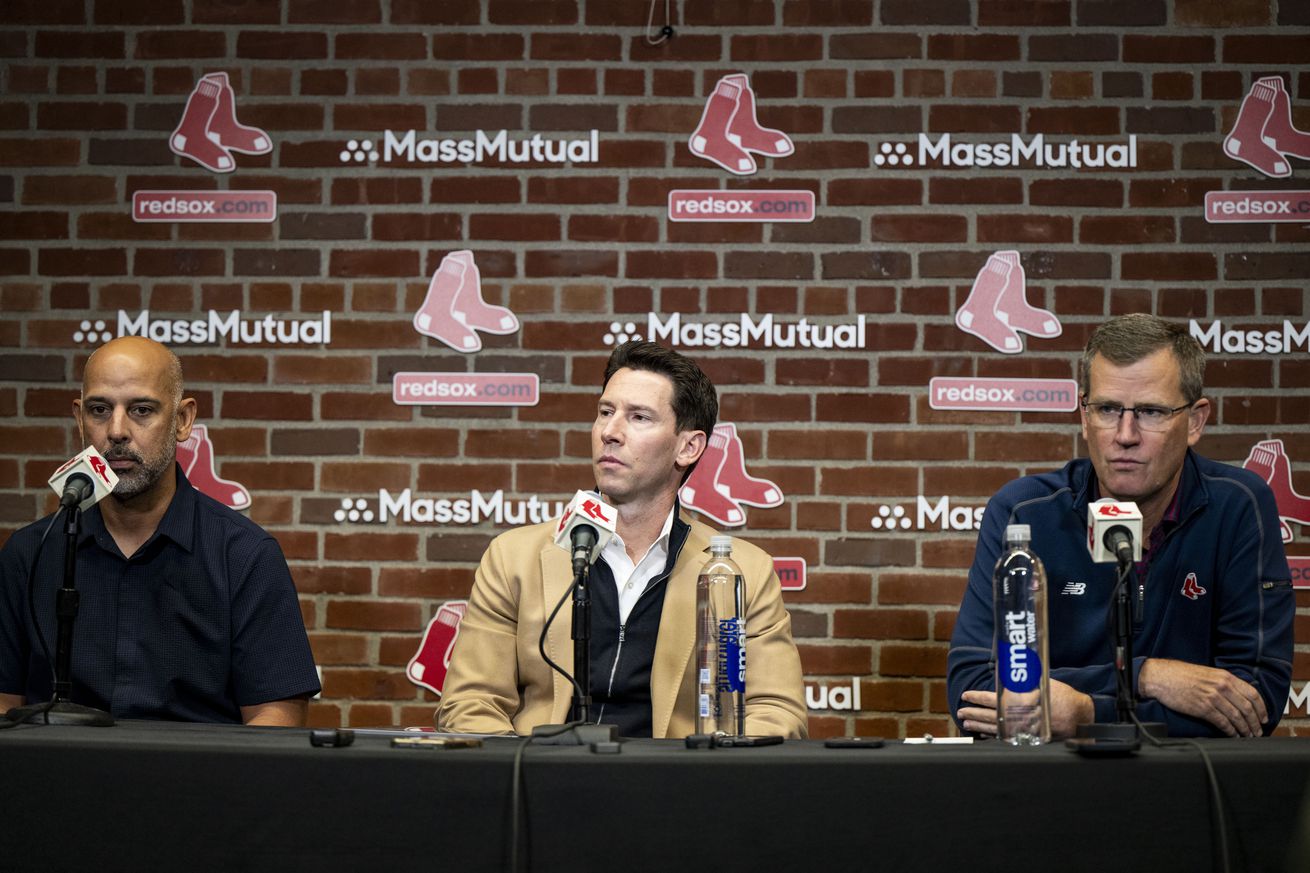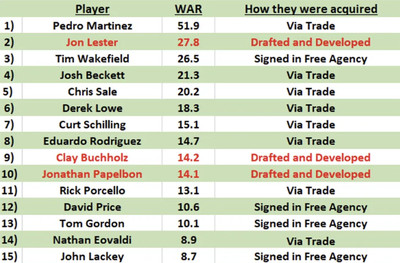
One day into the offseason and the apropos of nothing machine has already kicked into high gear.
On Monday, the Red Sox held their End-of-Season press conference from Fenway Park, and while many words were spoken, not much was actually said.
Perhaps the clearest and loudest statements were made by John Henry and Tom Warner, who both weren’t there, and instead left Sam Kennedy, Craig Breslow and Alex Cora to fend for themselves and explain away the current position of the franchise.
Anytime they were asked about payroll, or anything that would improve the team externally, they began dancing like puppets, balancing word salad about improving the team for the sake of the fans with malarkey about how it’s a competitive disadvantage to discuss payroll.
Here’s Sam Kennedy on that very topic:
“It’s been a hallmark that we don’t talk publicly about what we plan to do with our payroll. Not because we’re trying to hide anything from the media or our fans. We just don’t like to talk publicly about our payroll because we see it as a competitive disadvantage in the American League East to not tip our hands to our competitors.”
You know what’s a much bigger competitive disadvantage when it comes to payroll? Spending tens of millions of dollars less than you’re capable of on a roster when all you had to do was get to 86 wins to be a playoff team. This isn’t complicated!
Last winter, the Kansas City Royals went out and signed Seth Lugo for three years at $45M, and Michael Wacha for two years at $32M. They made a combined 62 starts, pitched 373 innings, went 29-17 on the mound, and posted ERAs of 3.00 and 3.35 on their way to helping the Royals improve by 30 games, going from a 103-loss team to a postseason spot. If the Red Sox did that, they’re playing baseball this week.
Also, Sam Kennedy has this backwards. If clubs knew and believed you were going to spend on players like the U.S. government when it sees a new war to fund, it puts you at a bigger competitive advantage in trade negotiations. If you’re negotiating with a small or mid-market team for a pitcher who desperately needs a good left-handed bat and they know that at any minute you might turn around and spend through the nose to get that pitcher elsewhere, they’re going to have to cave a little to get the thing done.
Baseball negotiations are largely about leverage, and leverage is a powerful thing. It’s why monopolies tend to get everything they want when the antitrust laws are not enforced, it’s why the chip leader in a poker game can bully their opponents, and it’s why the Red Sox and Yankees used to get all the hot players on the market.
This fantasy the front office is trying to spin now that good teams don’t discuss their payroll is absolute ludicrous. They might not discuss details, but if you’re going to generally make waves, you want teams on the trade market to know that to force the best offer out of them.
If that wasn’t discouraging enough, then there was this answer by Craig Breslow, who was asked about the need for high end pitching following his alarming propensity to talk about improvement from within. (Buckle up and drink some coffee to get through this one)
I think we are very open to improving our rotation and our bullpen though a number of paths. We intend to be aggressive in exploring all of those to act decisively when opportunities present themselves. I think we would benefit from both. At some point there will be a question about the reasons for struggles in the second half. I do think overall organizational depth is something we can point to as an area that needs to be strengthened so that you know in the second half as inevitably guys get hurt or performances regresses, we have capable players who can step in and make that transition seamlessly. At the same time, every team in baseball is well served by having someone at the front of the rotation that can win a game when a team needs it. I think fortunately we saw a number of guys in the rotation this year take a step forward. I don’t want to devalue the job that guys like Tanner and Brayan and Cutter did, but at the same time we need to get better and we need to be open to any opportunity to do that.
Craig Breslow is a very smart human being with a horrendous poker face. If you watch this entire interview (again, drink some coffee), one trend becomes crystal clear: Anytime he’s asked to speak about the possibly of adding to the top of the rotation, he gets extremely uncomfortable.
He’s quite thrilled to talk about all the improvements they’re making to player development and will yap your ear off there (and that’s actually great, because they need that too), but talk of any acquisition of an ace, and Breslow sounds like the kid who has to give a book report presentation to the class after not reading the book.
Here’s why: There are only three ways to get an ace, and none of them are compatible with the quick answer Breslow needs to give to the furious fanbase.
1) Pay for one. (That doesn’t seem to be allowed by ownership right now.)
2) Trade a package of beloved prospects for one. (Doable, but extremely uncomfortable for Breslow who is very passionate about the work they’ve done on the farm.)
3) Develop one yourself. (Also doable, but certainly not on the timeline needed. As good as the Red Sox have been down on the farm this year, pretty much all of the positively is limited to the position player side of things. There is nothing remotely close coming that resembles a top of the rotation arm. This is why they all want to talk your ear off about improvements from Brayan Bello, Tanner Houck and Kutter Crawford. It’s the best BS story they can tell.)
Looking at the last 30 years however, history says they almost certainly need to import the goods. Below is a table displaying the top 15 Red Sox pitchers by fWAR (Fangraphs WAR) since 1995, and then a note on how they were acquired. 80 percent of them had to be brought in from other organizations.

The bottom line is that developing aces is extremely hard, and other than Lester in 2013, the engine powering the top of their rotation to World Series titles has pretty much always been built from exports in one way or another. So unless John Henry either opens the purse strings or Breslow is able to absolutely nail the biggest trade of his life over the winter, this doesn’t bode well for the top of the 2025 rotation.
In some ways, this press conference summed up the current state of the Red Sox. It was all over the place, lacked a clear cut plan, was not particularly interesting, and left you wondering when anything is going to change.
If this offseason is anything like that press conference, it’s going to be a long six months.